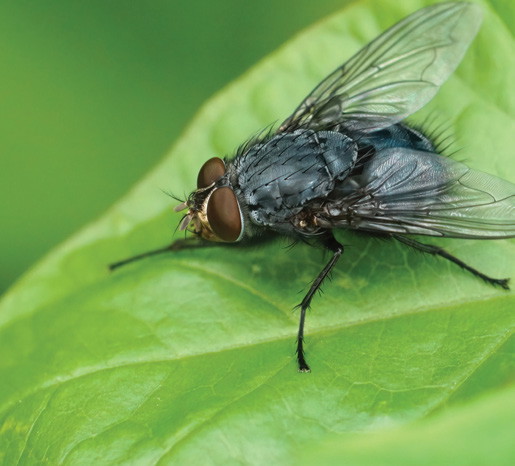Flies as alternate pollinators

The Department of Primary Industries and Regional Development (DPIRD) is examining the potential of native flies as an effective pollinator for commercial crops.
The project aims to identify native fly species that either complement bee pollination or as alternate pollinators in the event that bees are difficult to source. Various stresses on honey bees worldwide and the recent varroa mite incursion in New South Wales have highlighted the need for researchers to look at alternate insects and new methods to pollinate commercial crops to meet horticultural needs.
Flies have multiple benefits as pollinators in that:
1 Different species are present all year round,
2 They regularly visit flowers for nectar where their hairy bodies pick up and move pollen,
3 They can be mass-reared and,
4 They don’t sting workers.
Flies generally spend longer feeding on flowers than bees.
Trials have been done comparing pollination of open and netted avocado orchards with honey bees and three native fly species, the western golden-haired blowfly (Calliphora albifrontalis), the introduced European blue bottle blowfly (Calliphora vicina) and the western blue-bodied blowfly (Calliphora dubia).
Honey bees are the industry standard for pollinating avocados; however, bees produce poor quality and volumes of honey from avocado nectar.
The inability for the bee keeper to sell honey as a by-product of pollination services results in a higher cost to the grower.
Pollination using flies, could potentially halve the cost of pollination services for the industry.
Flies generally spend longer feeding on flowers than bees, with an average of 30 seconds feeding on an avocado flower, whilst bees spent an average of five to six seconds per flower. To date, research suggests that longer feeding times result in higher pollination.

TRIALS have been done comparing pollination of open and netted avocado orchards with honey bees and native fly species including the introduced European blue bottle blowfly (Calliphora vicina).
The C.dubia spent up to four times longer feeding on flowers than the C.albifrontalis and had higher pollination results. Under the environmental conditions of this trial, flies pollinated as many flowers (within enclosures) as open pollination arising from bees and other insects present in the orchard. At 2 avocado orchards in the south west, the fly species were capable of pollinating avocados at a level equivalent to or higher than that accomplished by bee hives placed in the orchard.
Currently, researchers at DPIRD are working with a commercial grower releasing the blowfly C.vicina into blueberry tunnel houses, each holding more than 500 plants, to determine how long they remain within the 115 metre long tunnel-houses and the impact on the blueberry yield and size of fruit. Previous glasshouse trials examined the pollination of blueberry plants using the blowflies C.albifrontalis and C.dubia, which showed that total yield and average berry size were improved as a result of these two blowfly species feeding on the flowers.
The next stage of the project will involve developing rearing techniques for the most promising fly species, that will enable mass production. Release strategies to retain the flies within an orchard environment are also being researched.
The ability and cost of mass rearing flies will determine their ultimate commercial use in horticultural settings.
The Managing Flies for Crop Pollination project is led by DPIRD and funded by Hort Innovation. This is a five-year national project, which commenced in 2018 in collaboration with the University of WA, Western Sydney University, University of New England, Seed Purity Pty Ltd and Biological Services, with funding through Hort Frontiers co-investment — an initiative of Hort Innovation with support
from the national avocado industry levy. Whilst the Western Australian component of the research is focusing on avocado orchards and blueberry crops, national partners are examining avocados, berries (blueberry, raspberry and strawberry), mango, seed crops and lychee.
MORE INFORMATION
For more information visit the DPIRD website www.wa.gov.au/organisation/department-of-primary-industries-andregional-development